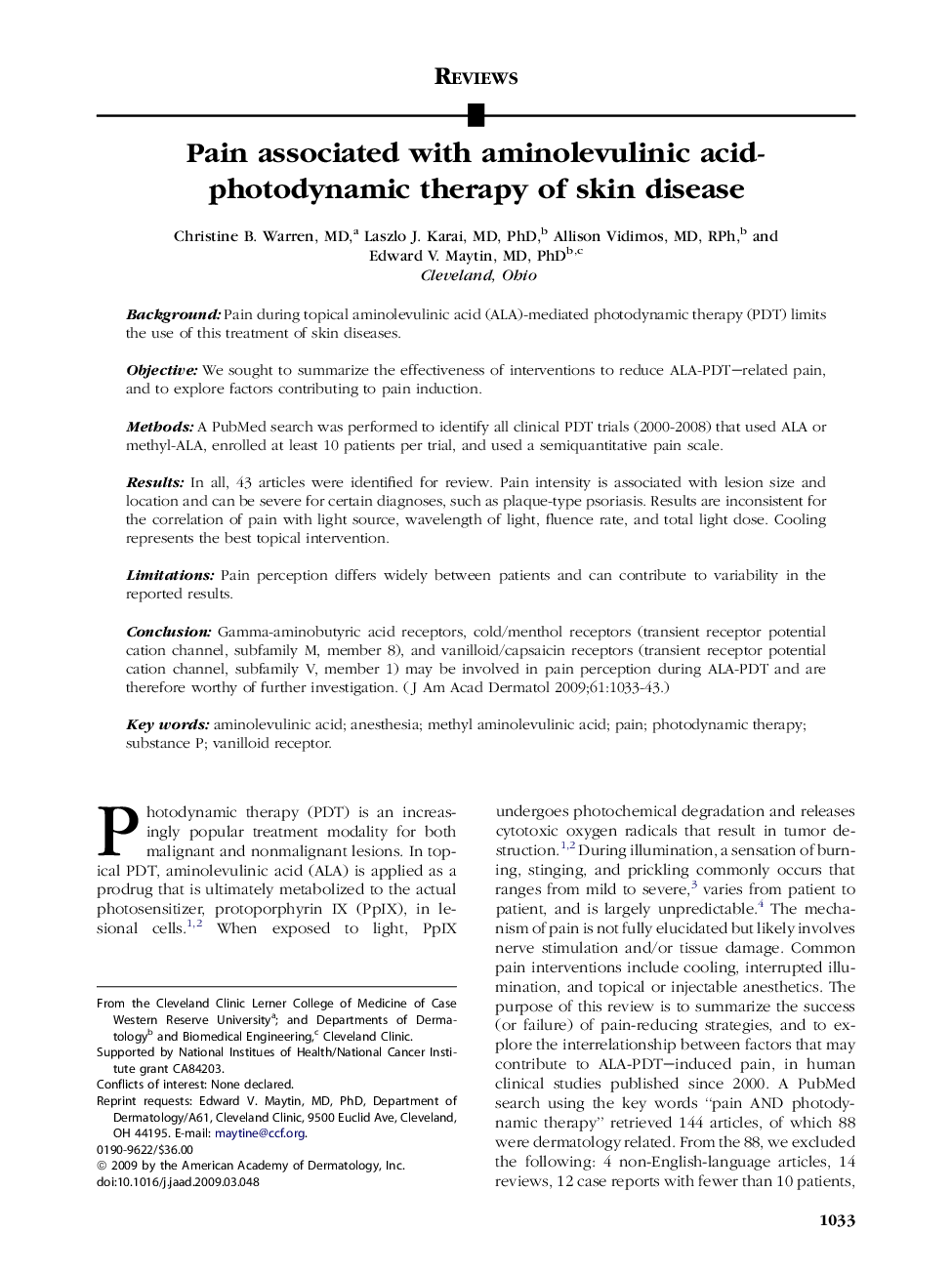| Article ID | Journal | Published Year | Pages | File Type |
|---|---|---|---|---|
| 3207981 | Journal of the American Academy of Dermatology | 2009 | 11 Pages |
BackgroundPain during topical aminolevulinic acid (ALA)-mediated photodynamic therapy (PDT) limits the use of this treatment of skin diseases.ObjectiveWe sought to summarize the effectiveness of interventions to reduce ALA-PDT–related pain, and to explore factors contributing to pain induction.MethodsA PubMed search was performed to identify all clinical PDT trials (2000-2008) that used ALA or methyl-ALA, enrolled at least 10 patients per trial, and used a semiquantitative pain scale.ResultsIn all, 43 articles were identified for review. Pain intensity is associated with lesion size and location and can be severe for certain diagnoses, such as plaque-type psoriasis. Results are inconsistent for the correlation of pain with light source, wavelength of light, fluence rate, and total light dose. Cooling represents the best topical intervention.LimitationsPain perception differs widely between patients and can contribute to variability in the reported results.ConclusionGamma-aminobutyric acid receptors, cold/menthol receptors (transient receptor potential cation channel, subfamily M, member 8), and vanilloid/capsaicin receptors (transient receptor potential cation channel, subfamily V, member 1) may be involved in pain perception during ALA-PDT and are therefore worthy of further investigation.
